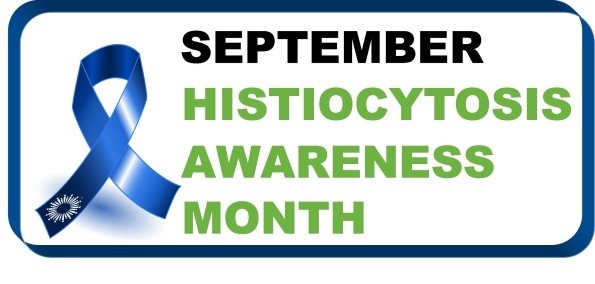
Hemophagocytic Lymphohistiocytosis (HLH) is a rare, life-threatening hematologic disease of the immune system. Most patients are babies or young children, but it can present in people of any age or ethnicity.
There are two types of HLH, primary and secondary. Primary (also called familial) HLH is caused by a genetic mutation. Secondary HLH is an acquired form of the disease often associated with autoimmune disease, viruses (particularly Epstein-Barr), infections, and cancers. It is challenging to differentiate between the two forms of HLH. Genetic testing is available, but a negative result is not conclusive. Approximately 30% of primary HLH patients have no identified gene defect. In fact experts are suspecting more and more that all HLH is genetic. Only more research will prove whether or not this hypothesis is correct.
HLH is characterized by a highly stimulated but ineffective immune system. This results in elevated cytokines, which are molecules that, in normal quantities, regulate the immune system. But this overproduction of cytokines causes a poorly controlled activation of too many white blood cells such as lymphocytes and macrophages. This process is called hypercytokinemia, or a cytokine storm. A cytokine storm has the potential to be very harmful to all vital organs and body tissues. These dramatically elevated cytokine levels trigger Hemophagocytosis, which is the abnormal consumption of blood cells by macrophages, causing the patient to have low blood counts. If time allows to perform a bone marrow biopsy, the finding of Hemophagocytosis in the bone marrow can be helpful to confirm a diagnosis of HLH.
Diagnostic criteria of HLH includes:
- Fever — oftentimes very high for prolonged periods of time
- Hemophagocytosis found in the bone marrow, lymph nodes, or spleen
- Pancytopenia (low blood counts)
- Liver and spleen dysfunction
- Hypertriglyceridemia and/or hypofibrinogenemia
- Elevated ferritin — an extremely high ferritin count is a major earmark of HLH
- Low or absent natural killer (NK) cell function
- Soluble CD25 (soluble IL-2 receptor) greater than 2,400 U/mL
If a patient presents with 5 out of 8 of the above markers, they meet the criteria for a diagnosis of HLH.
Treatment of HLH typically includes a combination of chemotherapy, immunotherapy, and high dose steroids. If HLH persists or recurs, the patient will require a bone marrow transplant for recovery.
Because it affects such a small percentage of the population, HLH is considered an “orphan disease”. This means that HLH is not granted significant government funding for research and outreach, but instead depends on private donations. Please help raise the awareness that this disorder so critically needs.
If you would like to learn more about HLH, please read my post, “Hemophagocytic Lymphohistiocytosis (HLH): Stories of (H)ope, (L)egacy, and (H)eroes“.
You can find links to more information about HLH on my “resources” page.






